Leicester City shook the world in 2016 when they won their first-ever Premier League title. All know the story right? In that time, the Foxes were led by (then) relatively unknown Riyad Mahrez and prime-aged Jamie Vardy. The latter still spearhead Leicester’s attacking line this campaign. Meanwhile, the former has left the club a few seasons ago to join Manchester City.
Despite that, Leicester have found a new gem to replace the Algerian. Even better, this player came from Leicester’s academy; costing them absolutely no. His name is Harvey Barnes. The 22-year-old’s impressive career start is one of the reasons why Leicester are standing in the third place of the Premier League at the moment. Without further ado, this tactical analysis will inform how Barnes gives an impact on his team.
Player profile
Barnes is originally a left-winger. However, he is quite a versatile attacker who can play in multiple attacking positions. Last season, Barnes was loaned to West Bromwich Albion. He made 28 appearances for the Championship side, with almost half of them playing as an attacking midfielder. In those games, he made nine goals and eight assists for West Brom. Convincing enough to make his parent club rely on him in this campaign.
Under Brendan Rodgers, Leicester have become a possession-based team. Currently, they are averaging 54.4% ball possession per game; fourth-highest in the league. For a fact, they only averaged 44.7% possession when they won the league back in 2015/16. Despite that, they are still very deadly on transition. Leicester have scored seven counter-attacking goals this season, only one fewer than the leaders, Liverpool.
Barnes has played 32 matches so far in his first full season for Leicester. Looking at the statistics, he has made seven goals and seven assists across all competitions. The respectable feat proves that Barnes fits well in Rodgers’ tactics.
Provides the width
In this part of the scout report, we’re going to take a look at Barnes’ role for his team’s attacks. Mainly, Rodgers likes to set his team up in a 4–1–4–1. Barnes is often deployed as the left-winger; his favourite position. When Leicester have the ball, the 22-year-old is tasked to provide the width and stretch the defensive line. By doing that, he can also be useful for his team when they have to switch the play.
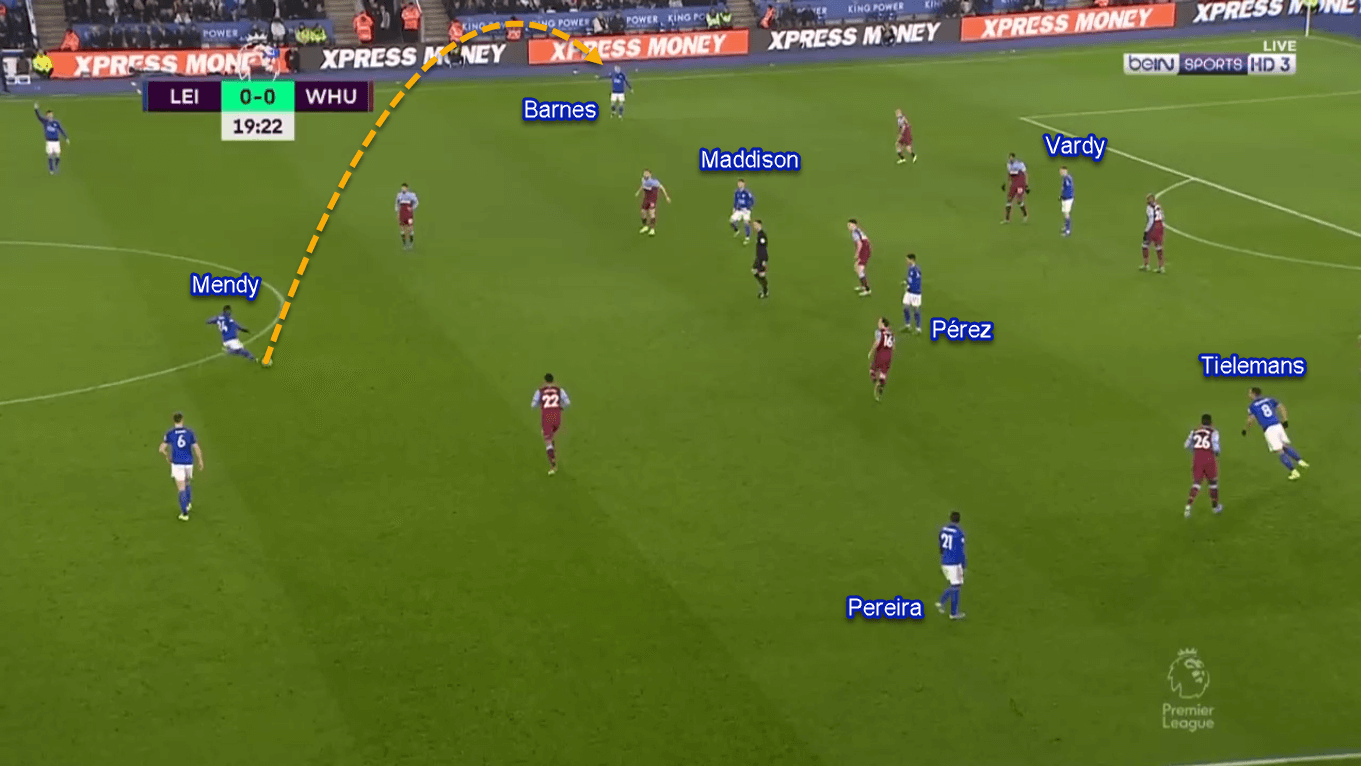
When facing teams with low defensive blocks, Rodgers usually allows his wide players to rotate with each other. The objective behind this is to disrupt the opponents’ defensive positioning. One way to do that is by sending Barnes inside, almost parallel with the main striker. Indeed he starts wide when he doesn’t have the ball, but when the ball is in the left flank, Barnes would be tasked to move inside. When this happens, the left-sided central-midfielder would drop a bit alongside the defensive midfielder. The flank then would be filled by the marauding left-back.
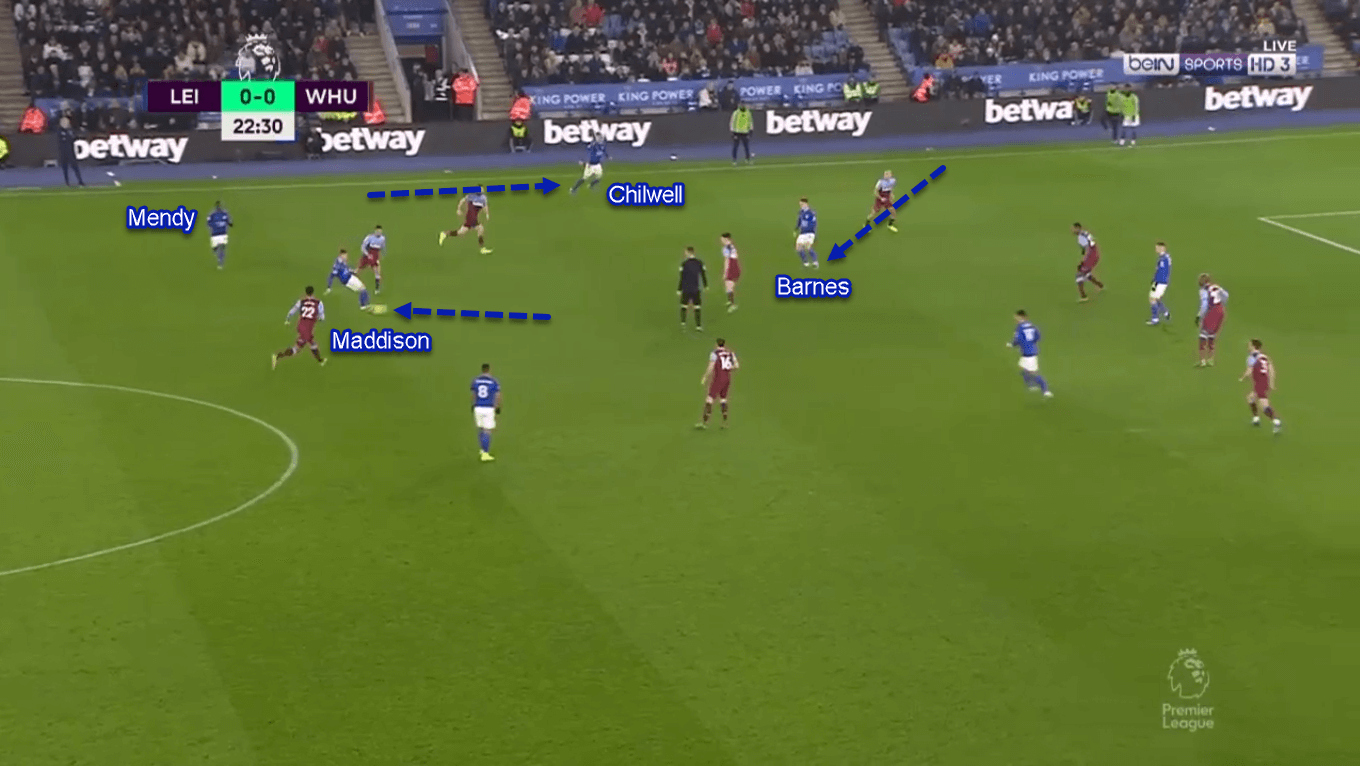
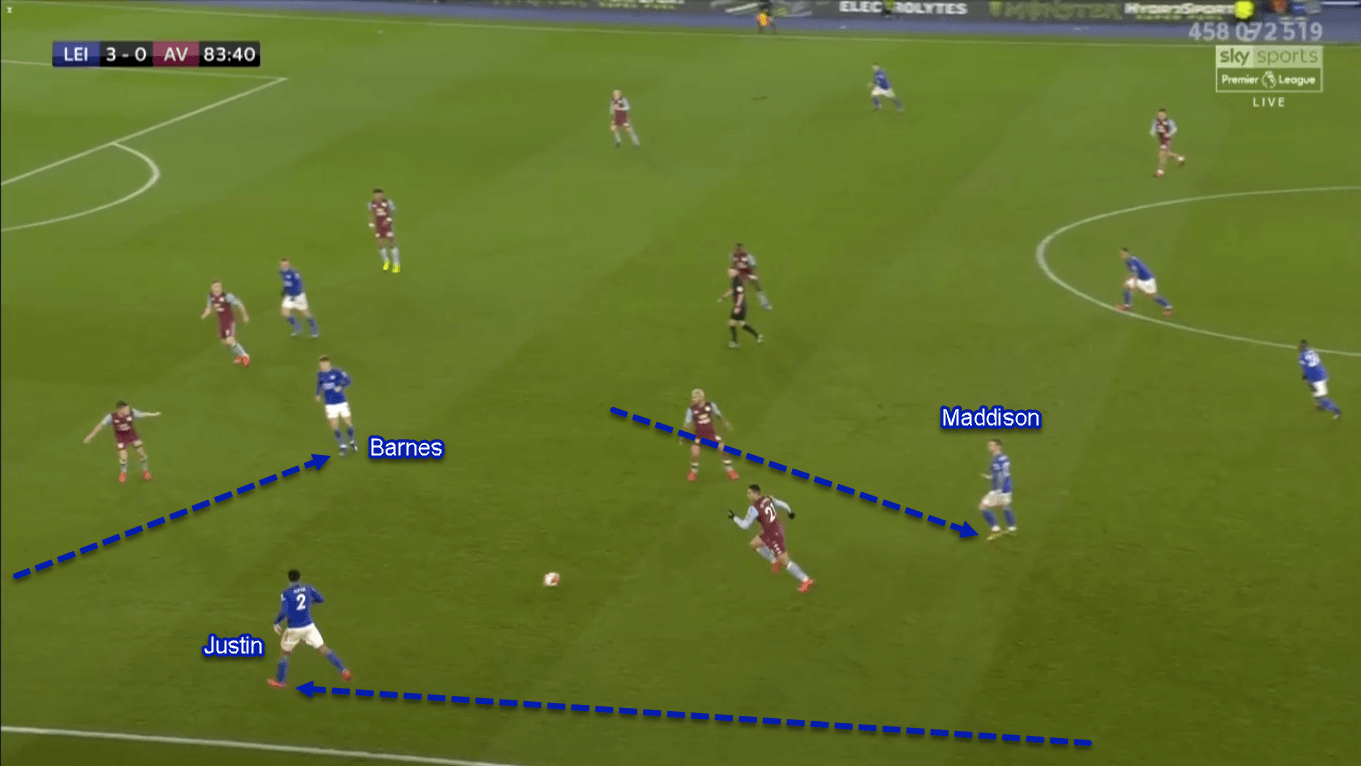
Another way to do rotate is by switching Barnes with his nearby central-midfielder. The midfielder — mainly Maddison — then can send the ball into the box with his brilliant crossing ability. Not only that, but Leicester also have Ben Chilwell in the left flank. The left-back also can provide quality balls into the final third.
Sharp in the final third
Before going deeper, we must realise that Leicester are not blessed with physically supreme attackers. The tallest forward in Rodgers’ squad is Kelechi Ịheanachọ (185 centimetres), who mostly acts as a second-fiddle to Vardy. This is why Leicester tend to use low or ground final passes in the final third.
In the final third, Rodgers mainly gives different tasks for his attackers. The talisman Vardy will almost likely be found in central lanes. There, he’s positioned in between the defenders and would try to look to attack from their blind-spots. In the process, Vardy can also be found in the goalmouth to make tap-in finishes.
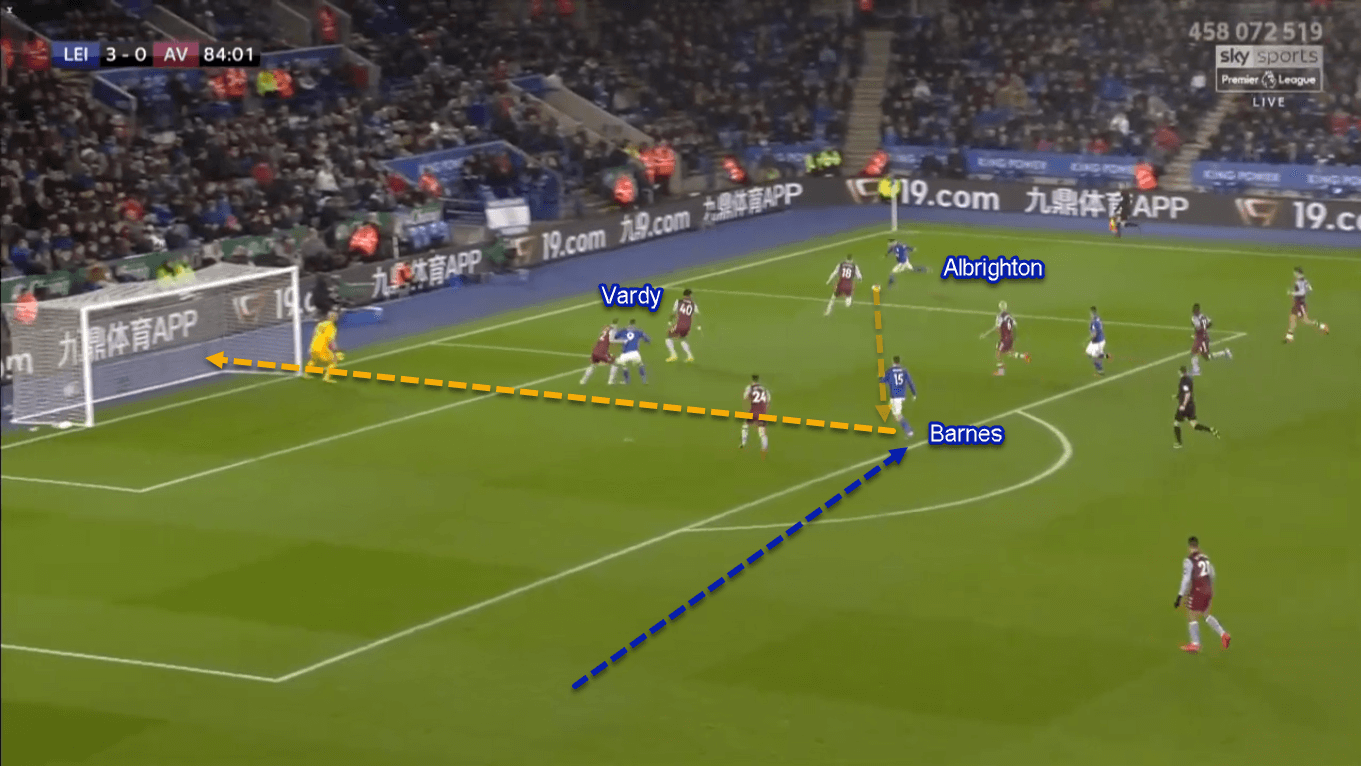
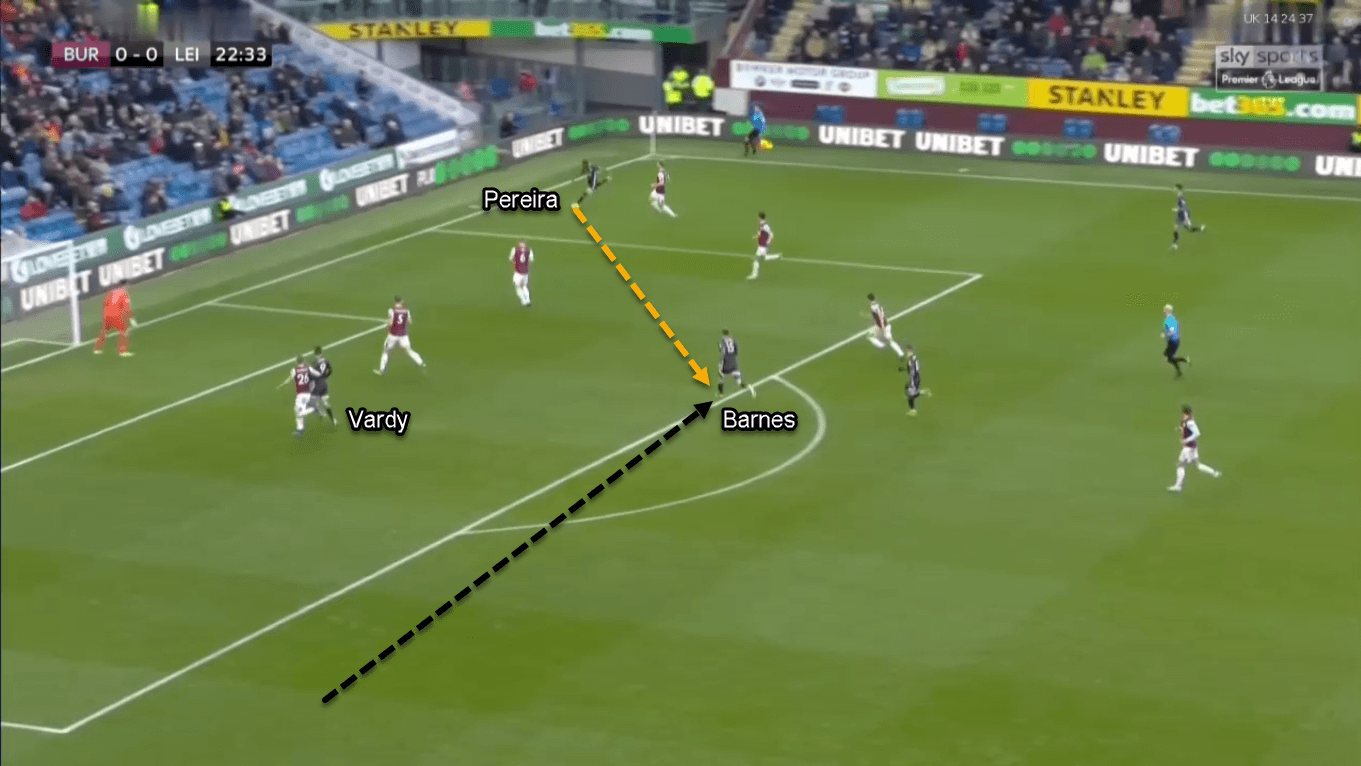
Despite playing as a winger, Barnes has a specific role in the final third. That being coming inside to receive cut-backs in the edge of the box. With Vardy being more advanced, the 33-year-old forward would often pull his markers focus completely on him. Then, this would give enough space in between the lines for Barnes to come and attack the cut-back crosses.
Being favourites would often find Leicester facing a really low defensive block. This means that the opponents would put their defensive lines compact and deep, either inside and just outside of the box. When facing this, Barnes is tasked to attack the far post. The objective is to offer himself as an additional lofted crossing target alongside his multiple attacking comrades.
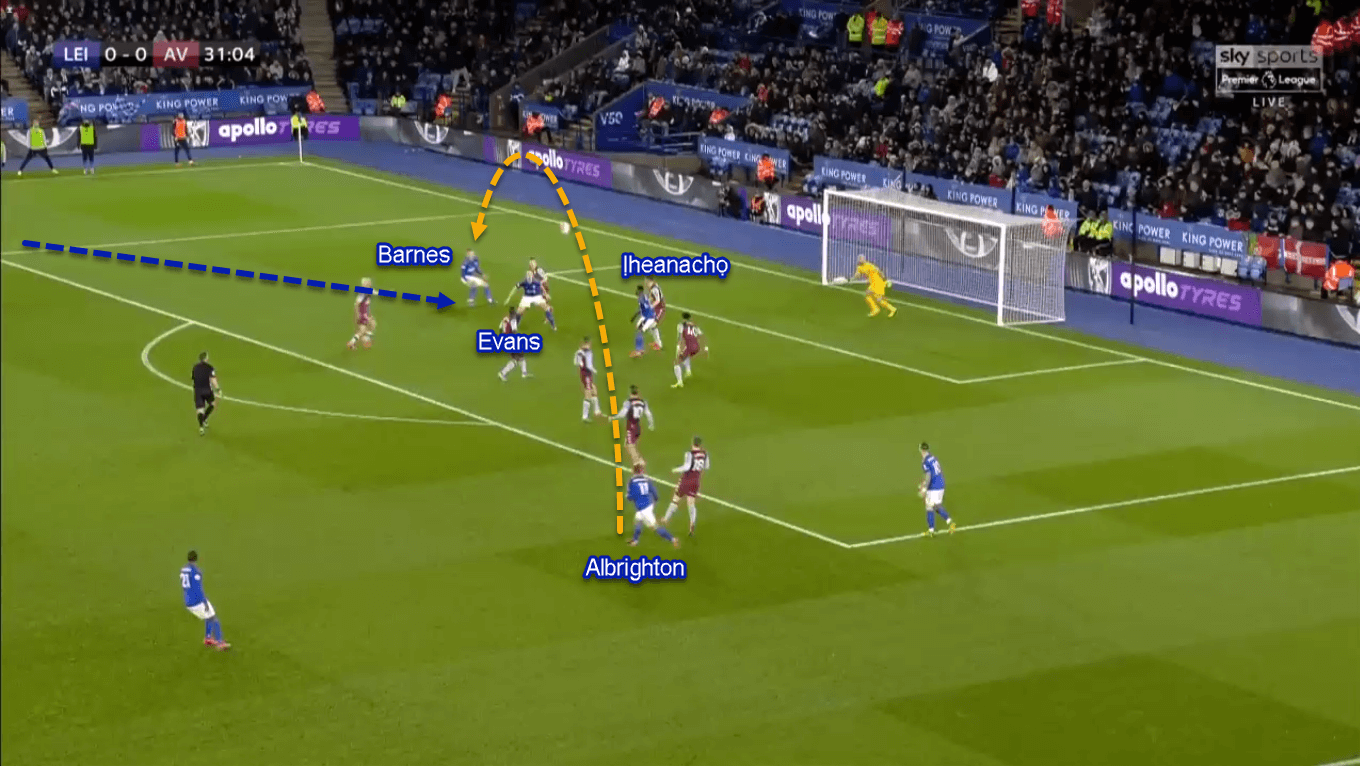
Defensive duties
Off the ball, Rodgers likes to set his team up in a mid-block 4–1–4–1. He would instruct his players to force the opponents to build through the flanks. When the ball comes to the desired area, it means the pressing trigger is activated. In the process, the ball-side winger would try to close down the opponents’ on-ball player immediately.
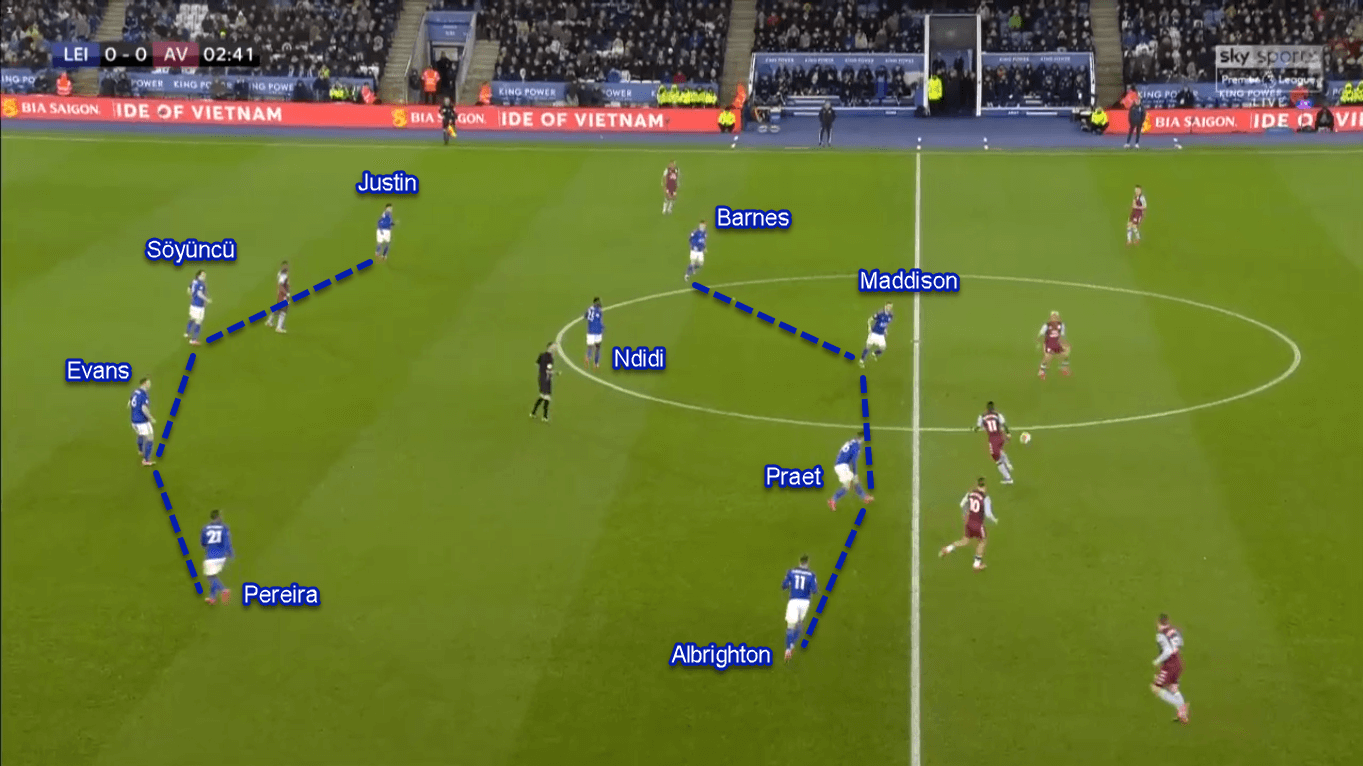
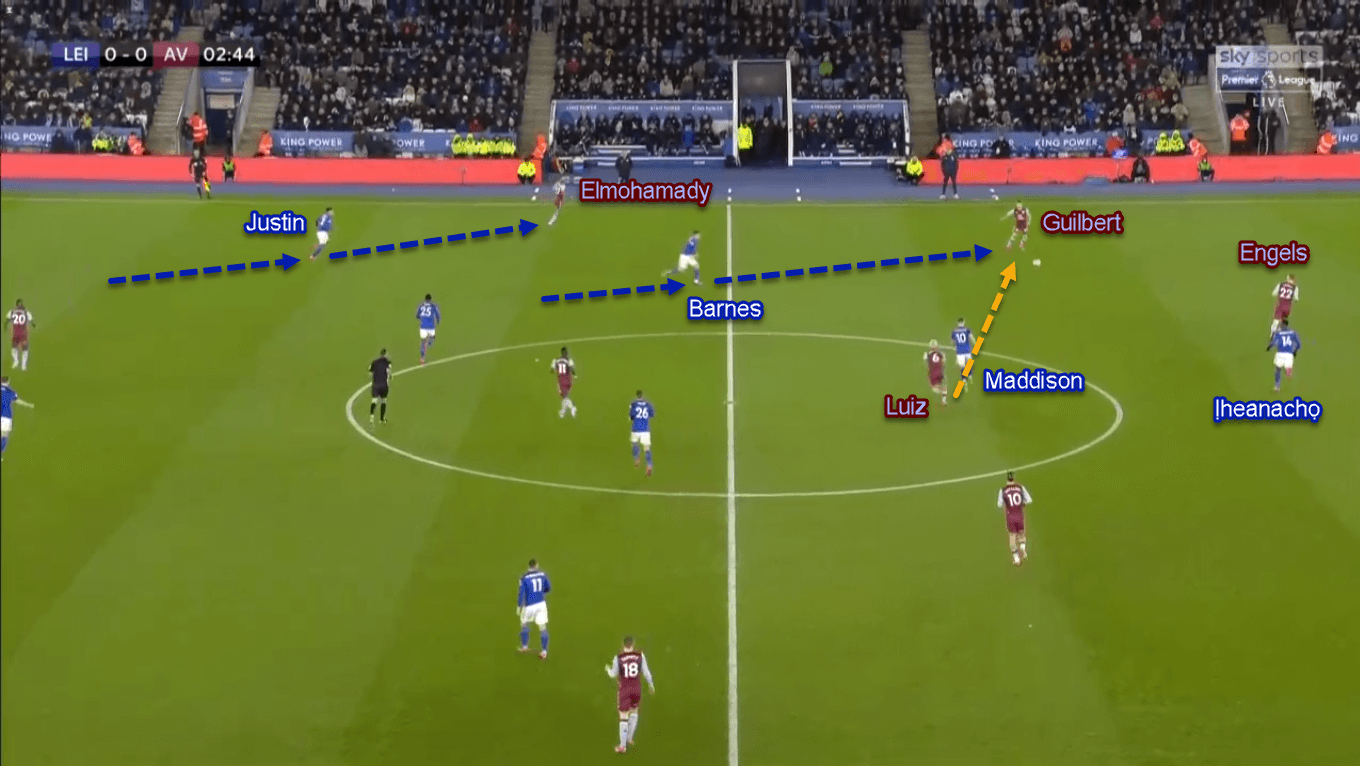
Behind the winger, his full-back would also step up to prevent a forward pass in the flank. On top of that, the striker would come near and close the passing option for the opponents’ centre-back. This calculated press would limit the on-ball opponent time and space heavily. Even better, to suffocate him and force an error.
The youngster’s defensive duty doesn’t stop there. In a 4–1–4–1, the defensive midfielder has a big task to cover a huge space in between the lines. Whenever the opponents try to build their attacks centrally, Barnes would often drop from his position to help the defensive midfielder.
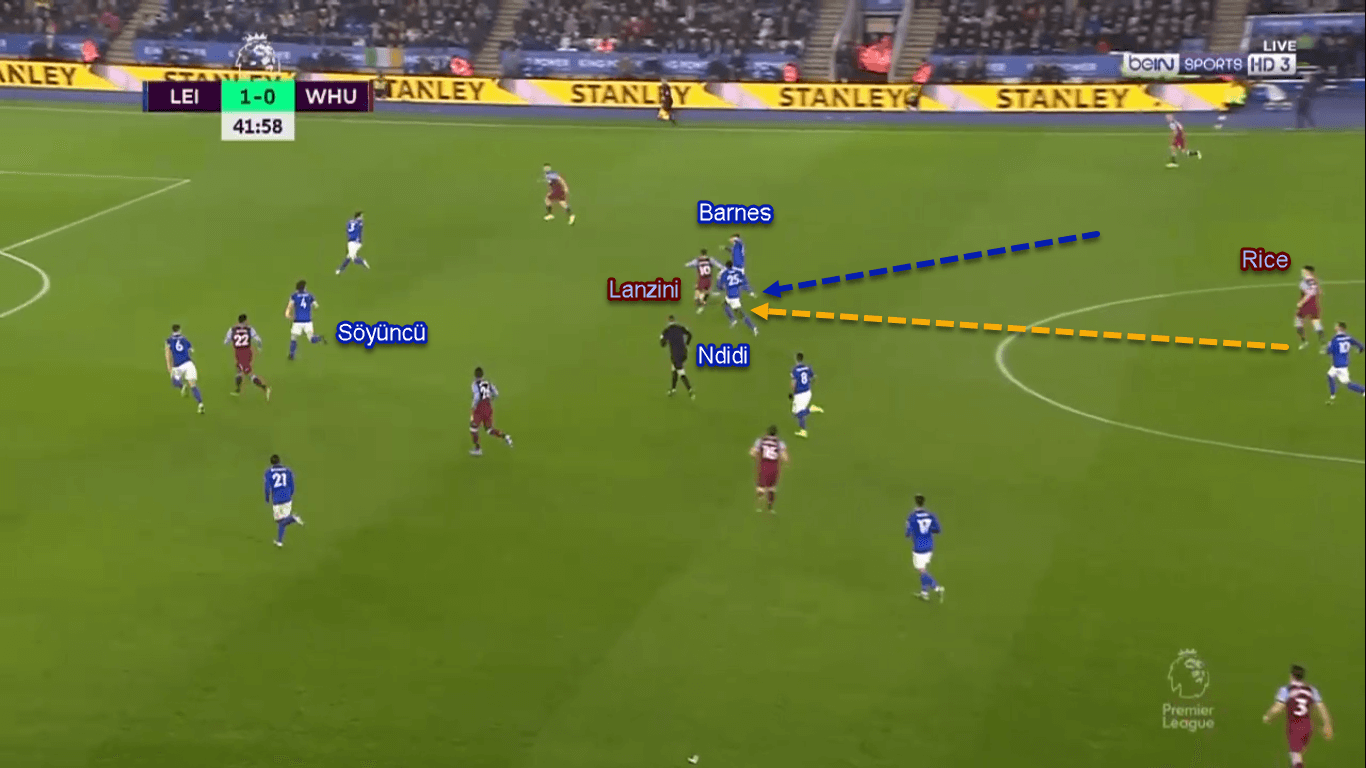
Another facet of the Englishman’s defensive tasks is to cover the full-back whenever he makes an aggressive movement. It could be an overlapping run or even an attempt to close down opponents’ winger. With exquisite pace under his sleeve, it would not be hard for Barnes to cover him defensively; particularly in transition.
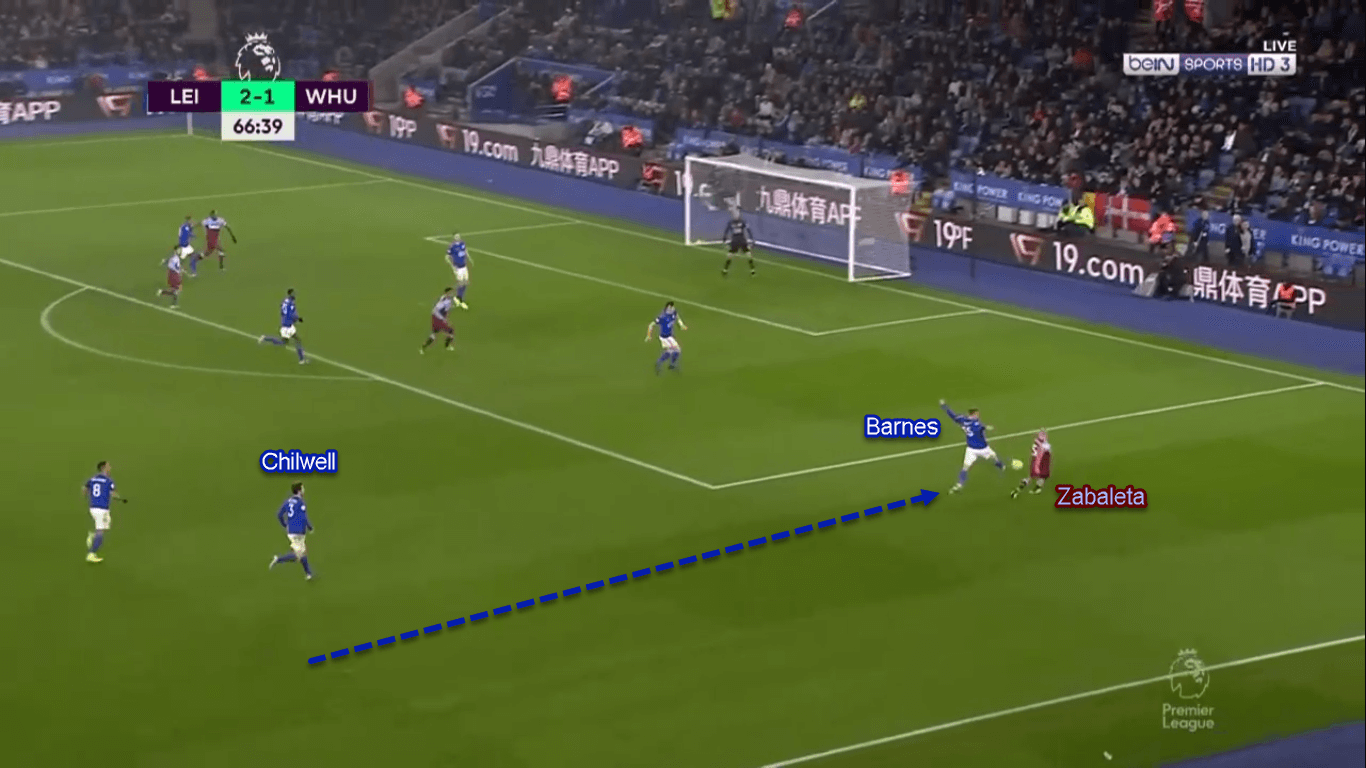
Fast, really fast
The Foxes are blessed with incredibly quick attackers, including Barnes. With Vardy’s declining pace, Barnes’ pace is pivotal for his team in executing counter-attacks. Mainly, he could be found with through-balls from deep; either grounded or lofted. Served with tasty through passes, Barnes only needs to make a run and chase the ball before entering the final third.
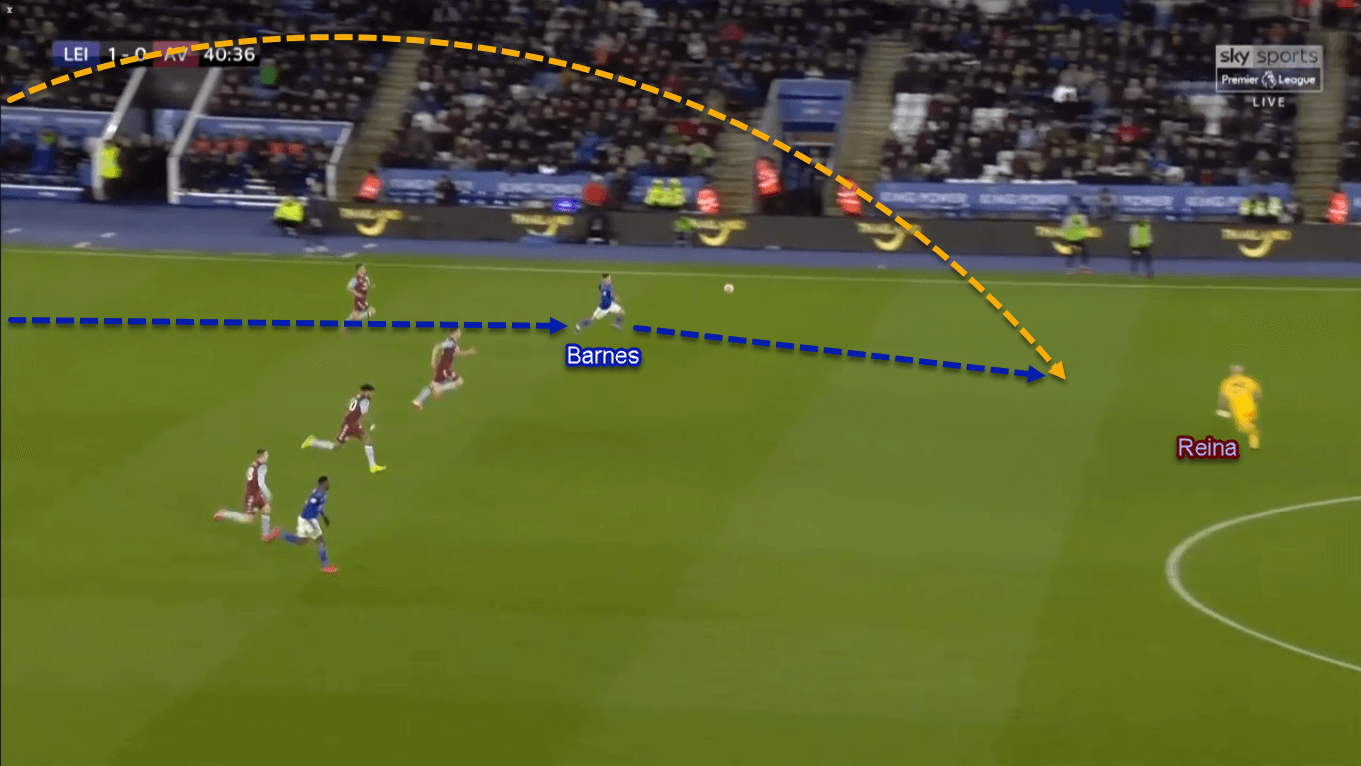
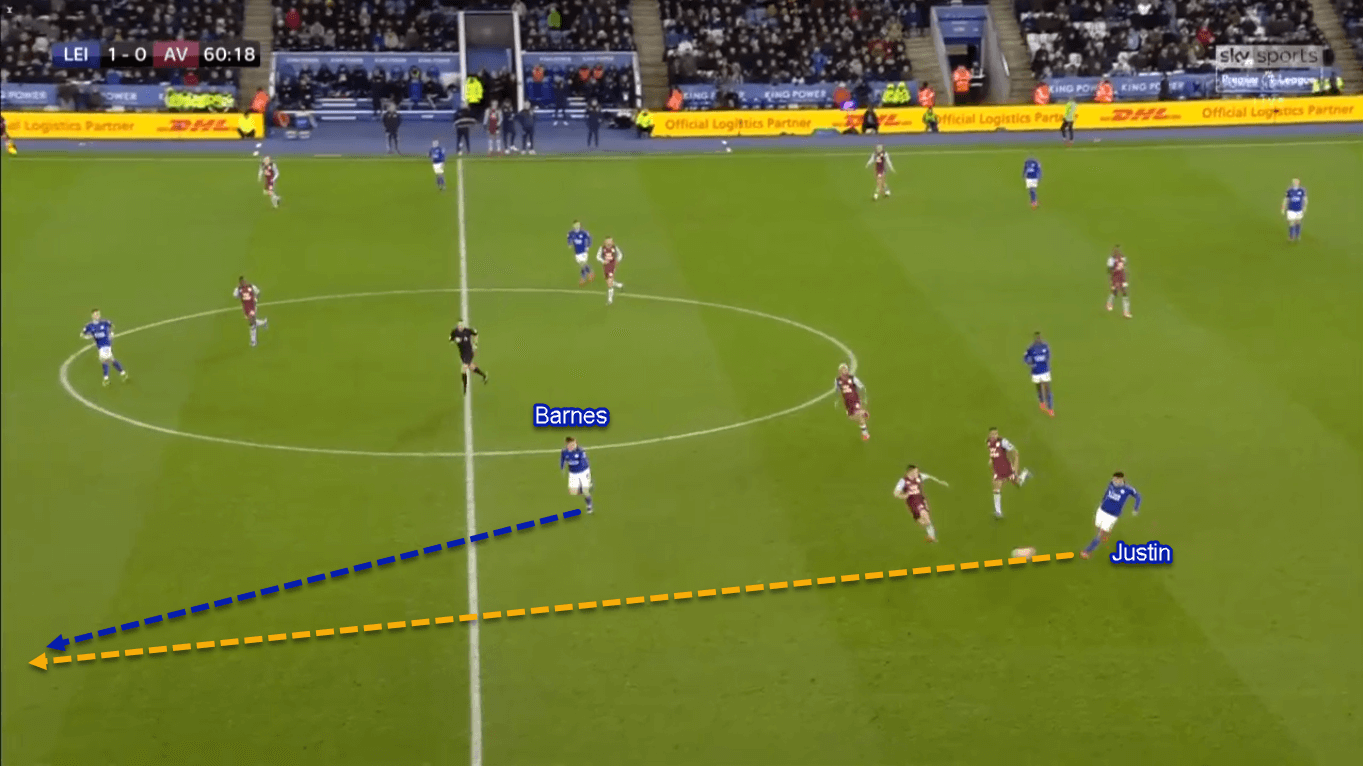
Not only without the ball, but Barnes is also very quick when the ball is on his feet. Even better, he could start the transition on his own. Either to find another teammate in a more advanced area, or do everything on his own, Barnes is very dangerous in counter-attacks.
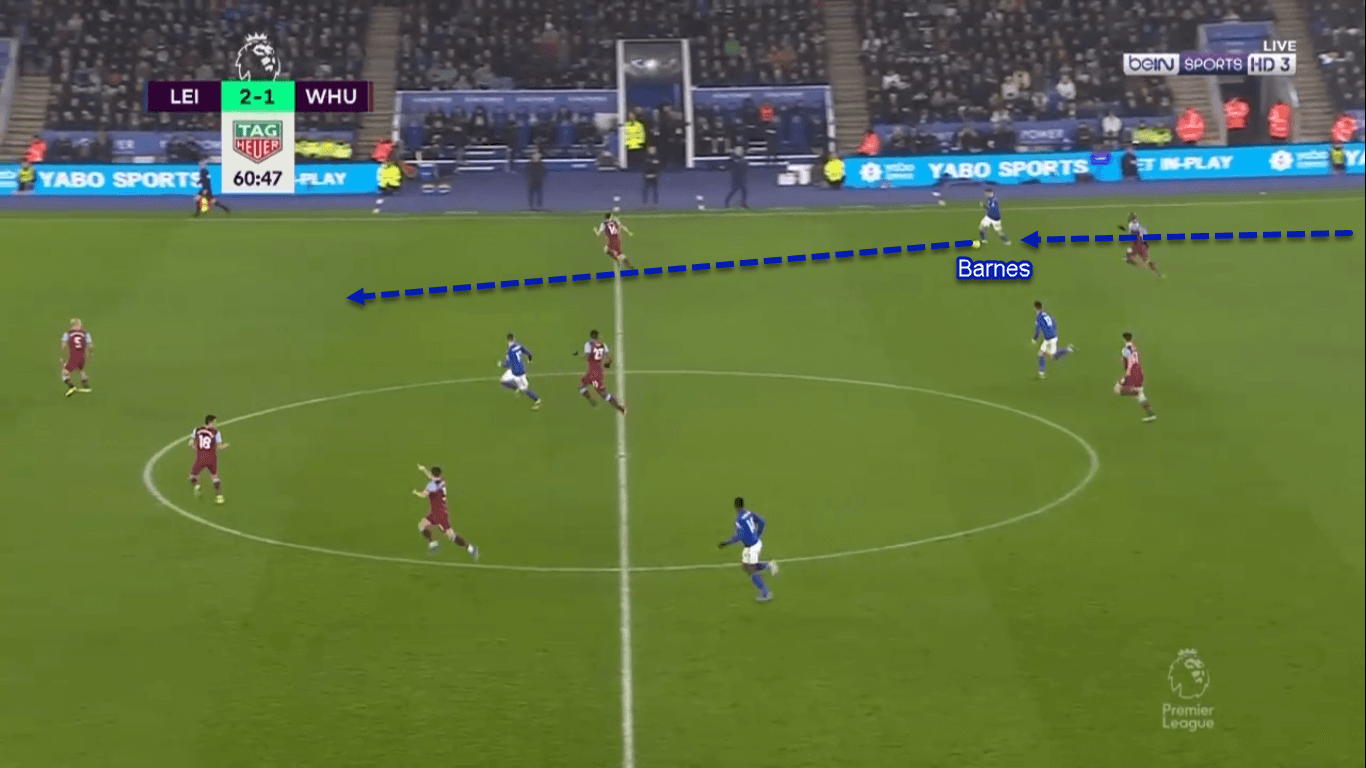
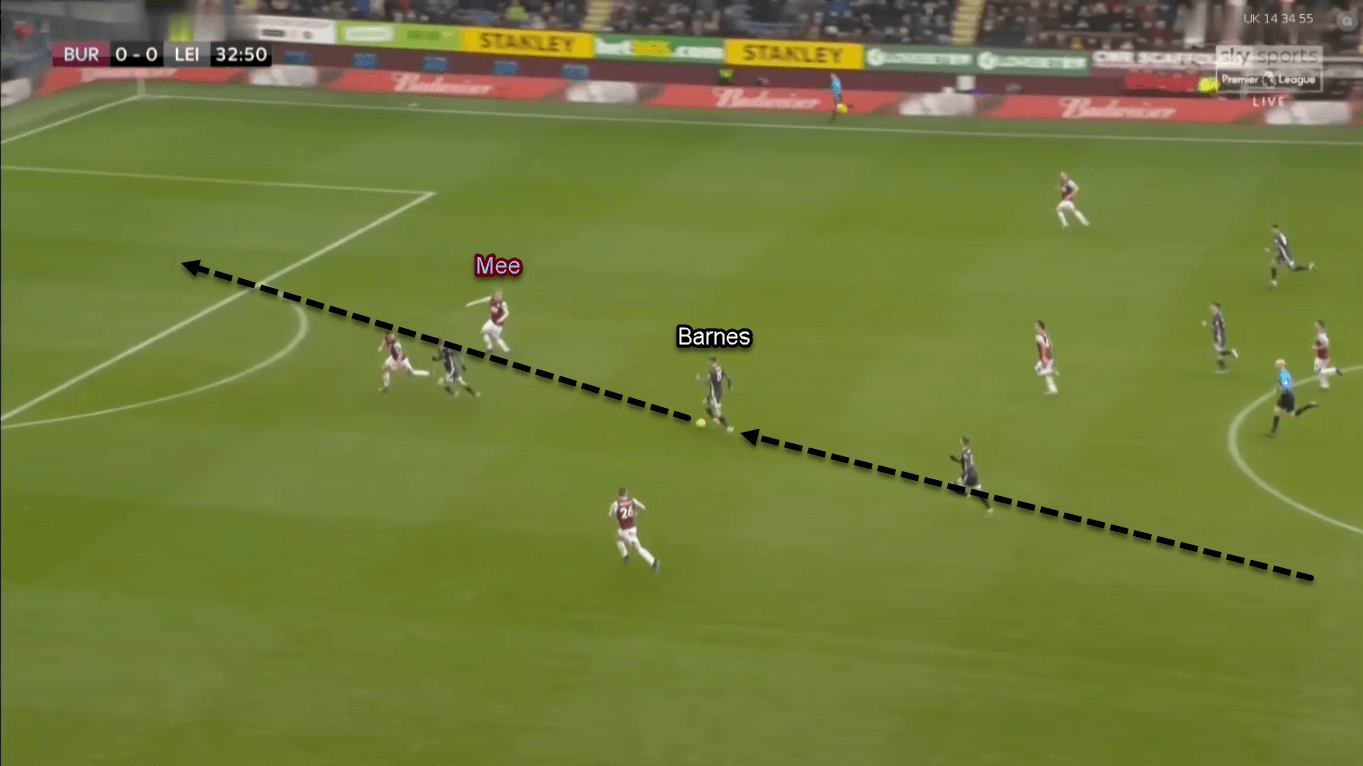
His nature to gets past the defender(s) quickly can also be found in one-versus-one duels. Barnes would try to utilise his pace — as well as the space around him — to beat his marker without wasting any seconds. Not only by knocking the ball forward, but he would also utilise a last-second sharp turn to confuse the defender. Per the stats, Barnes has attempted 3.6 dribbles per 90 minutes in the league. His success rate in that area is 52.78%. Again, a respectable number.
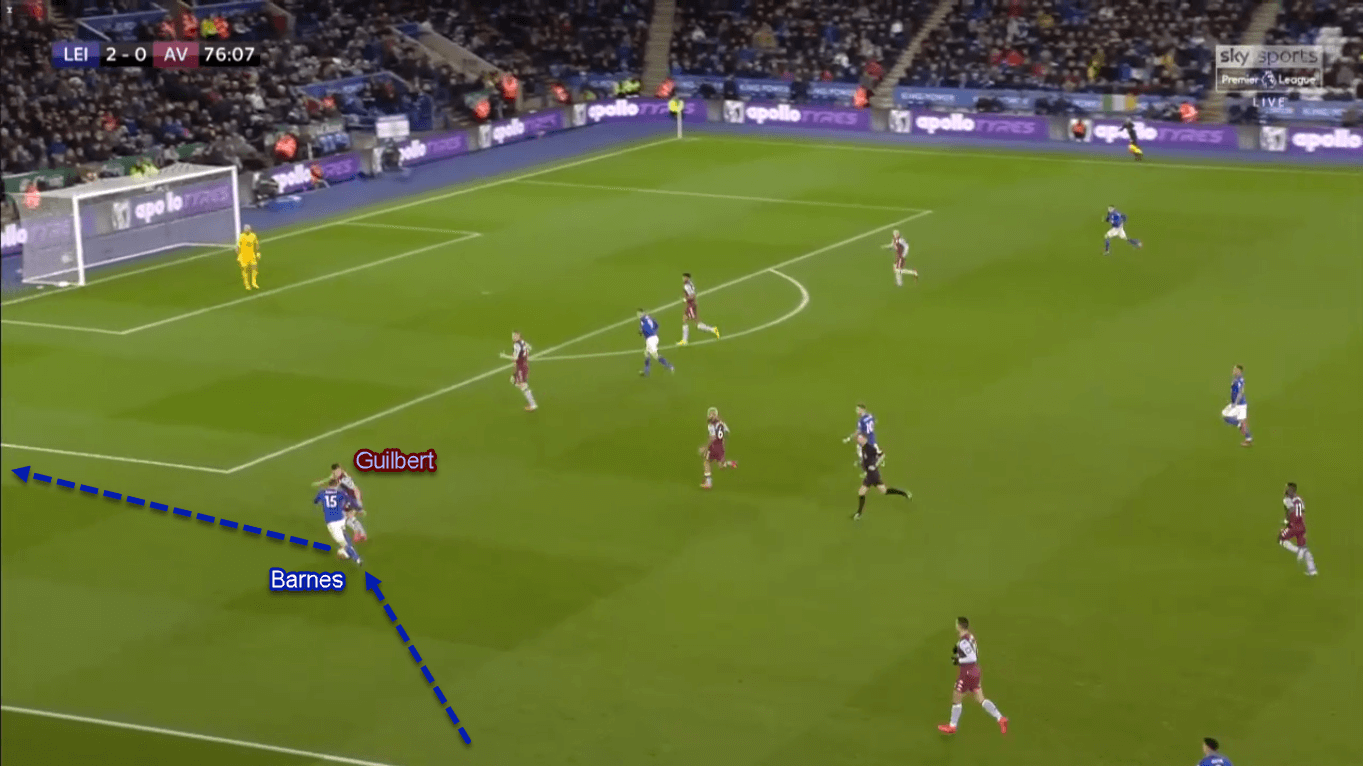
Potential issues
As mentioned previously in this analysis, Barnes tends to move inside and allows the likes of Maddison or Chilwell to provide the width. This is related to the left-wingers’ lack of ability to make crosses. Looking at the statistics, Barnes has attempted 1.8 crosses per 90 minutes in the Premier League. However, his success rate is only about 11.11%.
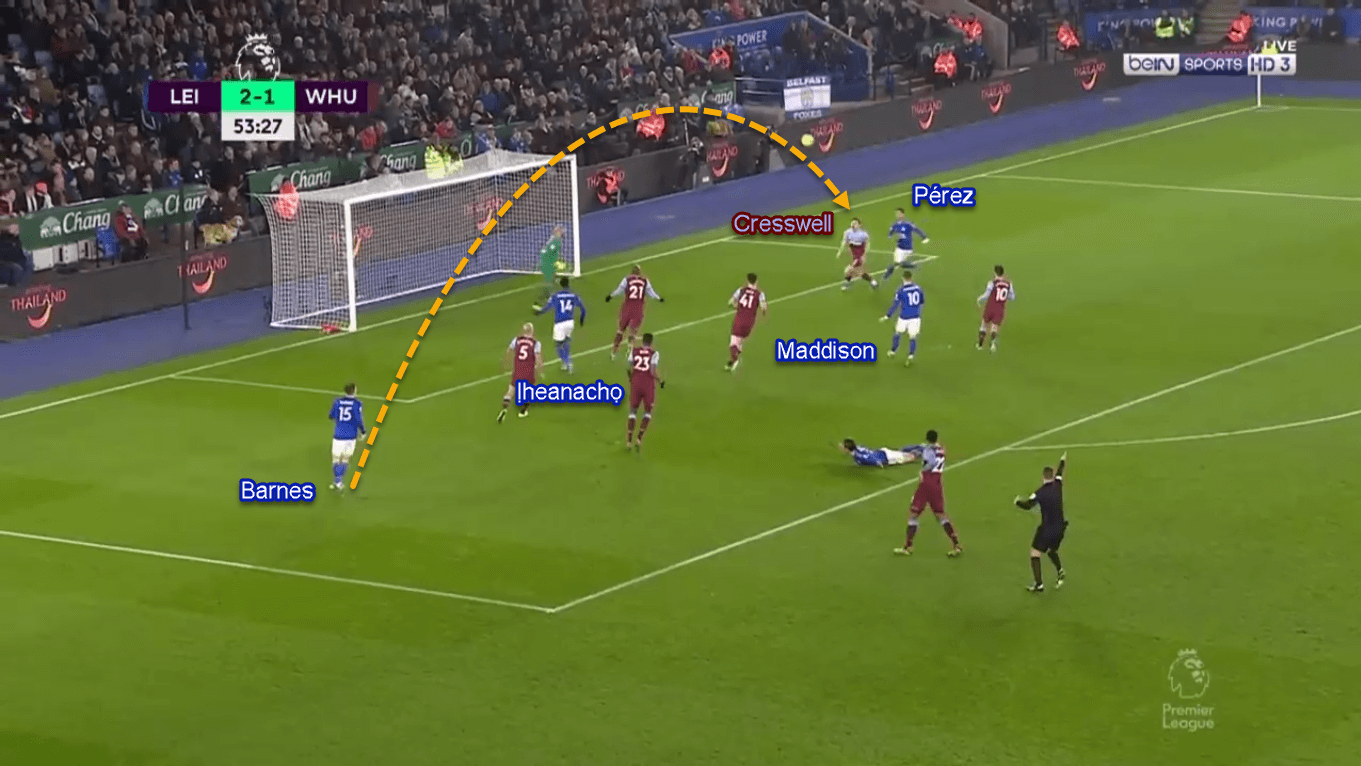
Not only that, but Barnes also tends to be one-footed. In one-versus-one duels, this would make him very predictable for the defender. They would only need to force Barnes to use his weaker foot before the Englishman commits an error. It also applies in goal-scoring attempts. So far, Barnes has managed to make 2.6 shots per 90 minutes in the league. However, only 0.6 shots (22.22%) in the same rate came from his left foot.
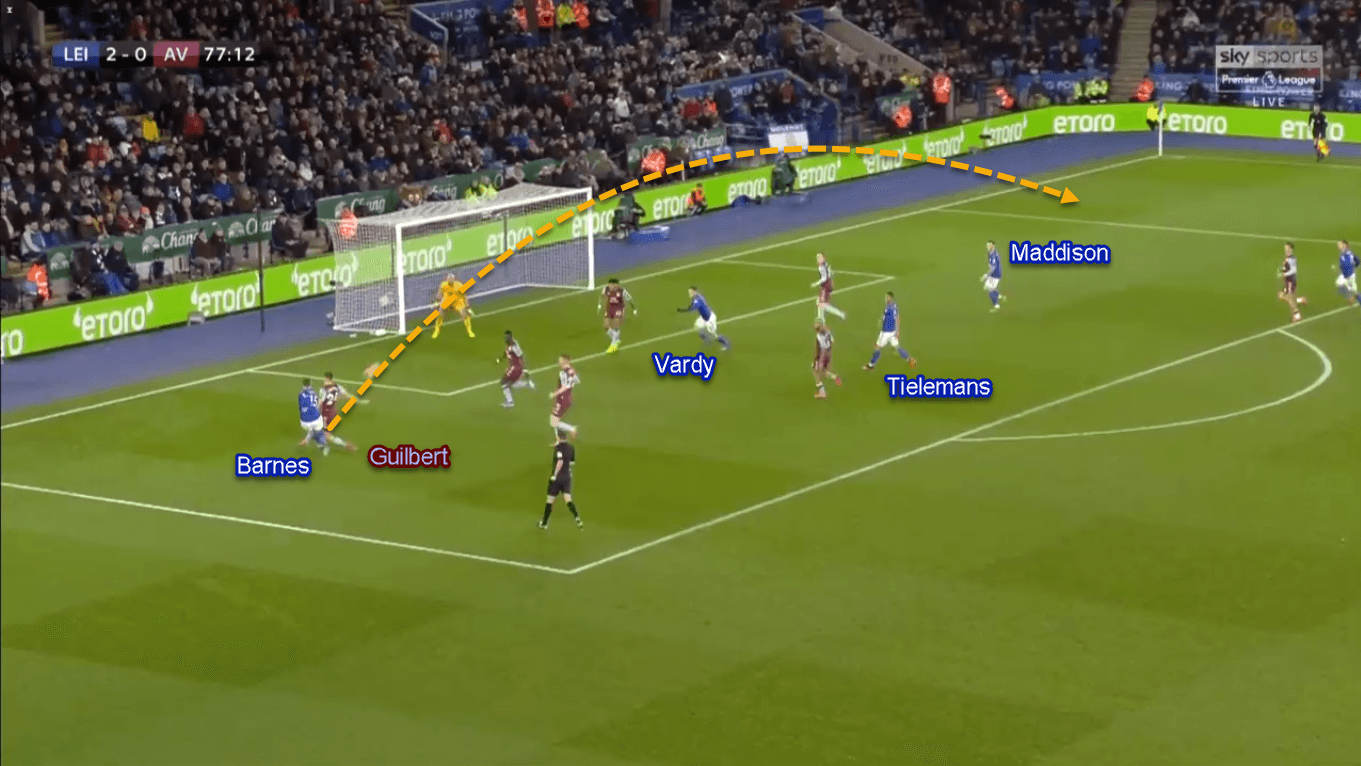
Another facet of Barnes’ potential issue is his defensive quality. Indeed, he has a great speed to make defensive runs or to cover the left-back, but his defensive awareness is not that special. Quite often Barnes found himself in a bad position against opponents’ offensive right-back. Either by losing them in his blind-spot, or even didn’t aware of their aggressive runs, Barnes’s issue could be exploited heavily in the future.
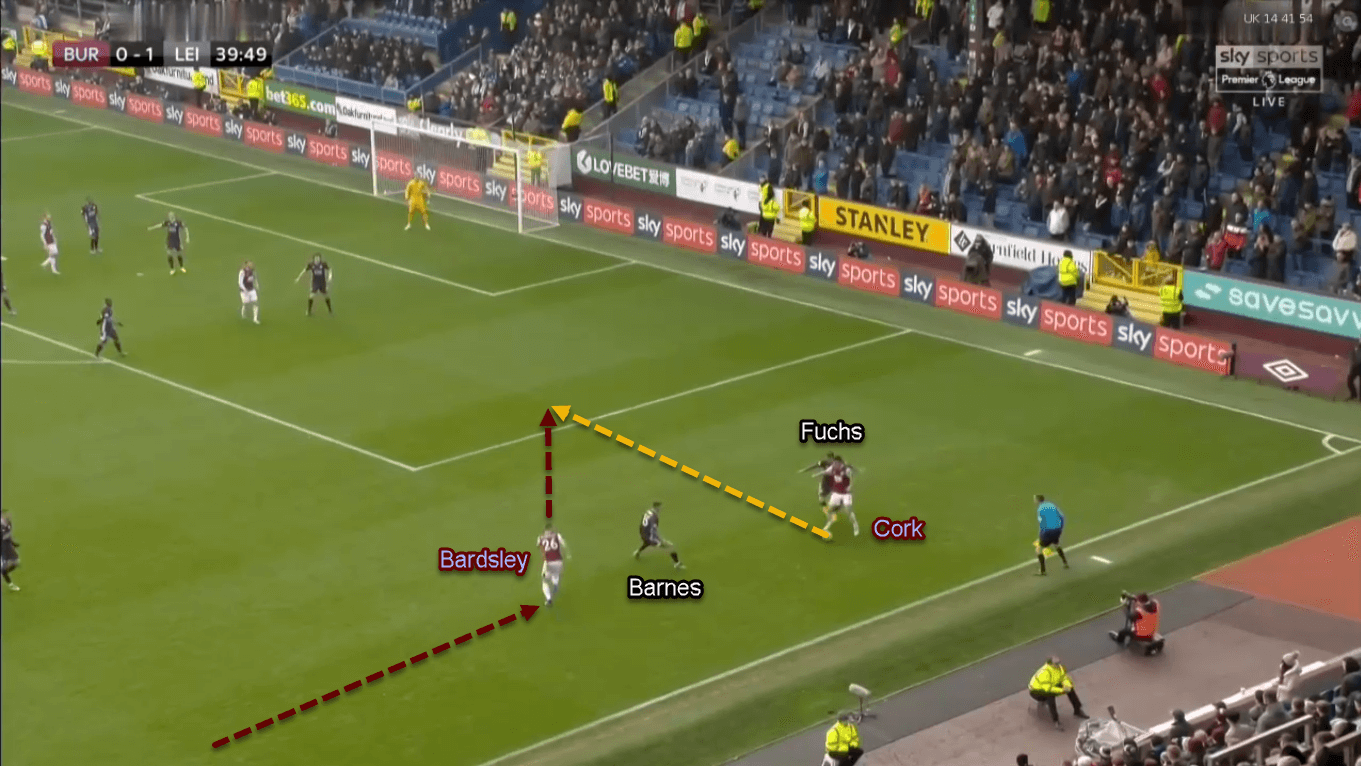
Conclusion
Incredible speed and a good nose for goal are much required for any of the Foxes’ forwards. It’s safe to say that Barnes has all of those in his arsenal as this scout report suggests. Lest we forget that Barnes is only 22 at the moment; making him one of the hottest prospect in England.
Despite that, this young gem has some parts that need to be polished. Those parts being his attacking unpredictability and defensive awareness. With a manager very keen to use young players, it will be interesting to see how Barnes develop his game in the future. Let’s just wait and see.





Comments